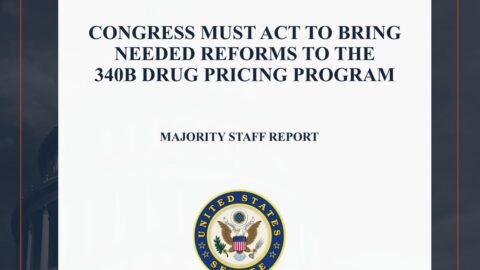No Curve tomorrow in honor of Charles Darwin’s birthday.
If you want to search Cost Curve back issues or link to anything you read here, the web links and archive are online at costcurve.beehiiv.com. You can subscribe there, too.
Thanks to all those who filled out the survey on your go-to health podcasts. The volume of responses wasn’t overwhelming, so I can’t make many quantitative conclusions about what pods you should be listening to, but a handful came up repeatedly.
It’s probably no surprise that it was generally the meticulously produced media-org pods that tended to capture the most attention.
The Readout Loud from STAT arose the most times (299 reviews on Apple Podcasts, which I’m using as a vague metric for overall listenership), and it’s hard to argue that’s not a must-listen.
What the Health from KFF Health News also showed up with some frequency (446 reviews), along with Tradeoffs (370 reviews). I expected to see a couple of mentions of An Arm and a Leg (1,100 reviews), which is co-produced by KFF Health News, but that didn’t seem to rate with you all.
Relentless Health Value (223 reviews) was on the playlist for three of you, which tracks with both the subject matter and the fact that I mention it from time to time here.
I also got a few suggestions for health-adjacent pods, such as the WNYC’s Science Friday (5,400 reviews), one of those shows that predates podcasting altogether.
Part of the reason that I floated the question is that I’m trying to figure out if there are some new places to put my time. I was hoping for some feedback on the Health Affairs podcasts, notably the Health Podyssey interview show (37 reviews). That show didn’t get flagged by anyone.
Two other interesting ones on my radar with a weirdly small number of Apple reviews are Bloomberg’s Vanguards of Health Care, which seems to have some guests with different perspectives, and Podnosis from Fierce. But — alas — no one mentioned those, either.
This is something that I’m going to keep looking into, so I’ll keep the survey open. I also want to acknowledge the role that Katie Koziara has played in my interest here. Katie is a master of executive visibility approaches and runs Voice-Driven Strategies.
What does the Trump administration want to do about drug prices? By now, you’re aware of my GIF-ified standard answer to that question: Nobody knows.
Trump was asked about drug prices — specifically the price of GLP-1 meds — during his Super Bowl-adjacent Fox News interview. And here’s what he said:
In London, you get it for $88. In New York, you get it for $1,200. You can’t even buy it. It’s very unfair. The identical package made in the same factory, shipped to different places, but made literally in the same factory – in London it’s $88, and in New York it’s $1,200. And you can’t get it. And the reason is because everything’s added onto the United States because the United States has been too nice. You know, I had transparency done, and Biden canceled it. Transparency would have solved that problem. But I’m gonna solve it one way or the another.
What does that mean for health policy, exactly? Nobody knows.
ELSEWHERE
The assault on NIH indirect funding was halted by a federal judge yesterday after 22 states filed suit to stop the new Trump administration policy. It’s just a temporary move while the legal system processes the case. There’s a hearing scheduled later this month, which might give time for opposition to build … a handful of Republican senators are already pushing back.
Yesterday, I made a prediction about the goofy NYU Langone Super Bowl ad: “I don’t think this is going to lead the outcome to Langone wants.” Unsurprisingly, the backlash has already begun, with Axios digging into why a nonprofit hospital — part of an industry already under attack — would blow 8 million clams on 30 seconds of airtime.
I bet I know what you need right now: a comic strip that explains 340B using cats. Thanks to neurosurgeon Anthony DiGiorgio, you’re in luck.
DiGiorgio, along with AEI’s Kirsten Alexsen, also has a new op-ed out highlighting 340B as a source of government waste. But what caught my eye was a brief suggestion that maybe the program needs a fundamental overhaul, perhaps via “user fees on industries the government felt should fund these hospitals.” As we’ve talked about a lot here, the current system — where safety-net providers require overpriced medicines to survive — is not a particularly wise or sustainable approach.
Cost Curve is produced by Reid Strategic, a consultancy that helps companies and organizations in life sciences communicate more clearly and more loudly about issues of value, access, and pricing. We offer a range of services, from strategic planning to tactical execution, designed to shatter the complexity that hampers constructive conversations.
To learn more about how Reid Strategic can help you, email Brian Reid at brian@reidstrategic.com.





